NUMERICAL SIMULATION OF THE FORMATION OF THE MONSOON GYRE IN AUGUST 1991
-
摘要: 季风涡旋对台风活动有重要的影响, 因此研究季风涡旋的形成机制有利于提高台风预报的准确性。此研究利用中尺度非静力数值模式WRF-ARW模拟1991年8月季风涡旋的生成过程, 并对其生成机制进行分析。模式结果表明, 此次季风涡旋个例是由一个中纬度气旋性低压发展而来。初期中纬度高层正位势涡度的强迫作用有利于对流层低层气旋性低压的发展和维持, 随后高层动力强迫作用减弱, 但中纬度气旋性低压在南移过程中其东南侧对流带逐渐与低纬地区的对流带合并, 使得对流潜热释放增强, 进而使低压在Gill响应的作用下不断加强并最终形成季风涡旋。同时, 涡旋的对流结构表现出明显的非对称性, 因而使其得以维持较大尺度。敏感性试验的结果表明对流层高层强迫对于初始低层扰动的发展至关重要, 而后期热带地区的潜热释放有利于季风涡旋的增强。Abstract: The analysis of the genesis mechanism is beneficial to improve the accuracy of typhoon forecast, as the monsoon gyre has an important influence on typhoon activities. The mechanism responsible for the formation of the monsoon gyre in August 1991 is investigated based on a series of numerical simulations using the non-hydrostatic Advanced Weather Research and Forecasting model (WRF-ARW). The results suggest that the monsoon gyre was evolved from a mid-latitudinal low. Upper-tropospheric forcing associated with the anomalous potential vorticity at mid-latitude was favorable for the development of the nascent low. While the subtropical low moved equatorward, the area of active convection to the southeast of the low gradually merged with the convective region in tropics, strengthening the latent heat release to the southeast of the low. Through the Gill-type response to the enhanced heat source, the low further intensified and became the monsoon gyre eventually. Meanwhile, the gyre's asymmetrical convective structure helped maintain the gyre size. Sensitive experiments show that upper-tropospheric forcing plays an important role in the development of the mid-latitudinal disturbance and the latent heat release in tropics is conducive to the intensification of monsoon gyre.
-
图 8 如图 4但为EXP1试验
表 1 试验设计情况
试验名称 模式设置 CTL 初始场来自ECMWF再分析资料 EXP1 对88°E~140 °W,35~54 °N, 500~50 hPa区域的再分析资料进行10天低通滤波后构建初始场与边界条件 EXP2 在150~168 °E, 7~15 °N范围内关闭微物理方案及积云对流方案 -
[1] HARR P A, ELSBERRY R L, CHAN J C L. Transformation of a large monsoon depression to a tropical storm during TCM-93[J]. Mon Wea Rev, 1996, 124(12): 2 625-2 643. [2] BOOS W R, HURLEY J V, MURTHY V S. Adiabatic westward drift of Indian monsoondepressions[J]. Quart J Roy Meteor Soc, 2014, 141(689): 1 035-1 048. [3] LANDER M A. Description of a monsoon gyre and its effects on the tropical cyclones in the western north Pacific during August 1991[J]. Wea Forecasting, 1994, 9(4): 640-654. [4] MOLINARI J, VOLLARO D. Development of a one-month long, westward-propagating subtropical low in boreal summer[J]. Mon Wea Rev, 2018, 146(1): 231-242. [5] RITCHIE E A, HOLLAND G J. Large-scale patterns associated with tropical cyclogenesis in the western Pacific[J]. Mon Wea Rev, 1999, 127(9): 2 027-2 043. [6] 冯涛, 黄荣辉, 杨修群, 等. 2004年与2006年7~9月西北太平洋上空大尺度环流场与天气尺度波动的差别及其对热带气旋生成的影响[J].大气科学, 2016, 40(1): 157-175. [7] 黄荣辉, 皇甫静亮, 武亮, 等.关于西北太平洋季风槽年际和年代际变异及其对热带气旋生成影响和机理的研究[J].热带气象学报, 2016, 32(6): 767-785. [8] 张萌萌, 管兆勇, 张奔奔.南方涛动年际变化与夏季亚澳季风环流及海洋性大陆区域气候异常的联系[J].大气科学学报, 2019, 42(1): 36-45. [9] 谷德军, 纪忠萍, 林爱兰.影响南海夏季风爆发年际变化的关键海区及机制初探[J].热带气象学报, 2018, 34(1): 1-11. [10] 李春晖, 潘蔚娟, 李霞, 等.南海-西太平洋春季对流10~30天振荡强度对南海夏季风爆发早晚的影响[J].热带气象学报, 2017, 33(1): 43-52. [11] CARRⅢ L E, ELSBERRY R L. Monsoonal interactions leading to sudden tropical cyclone track changes[J]. Mon Wea Rev, 1995, 123(2): 265-287. [12] 段晶晶, 吴立广, 倪钟萍. 2004年台风"艾利"与"米雷"路径异常变化分析[J].气象学报, 2014, 72(1): 1-11. [13] 毕鑫鑫, 陈光华, 周伟灿.超强台风"天鹅"(2015)路径突变过程机理研究[J].大气科学, 2018, 42(1): 227-238. [14] HOLLAND G J. Scale interaction in the western Pacific monsoon[J]. Meteor Atmos Phys, 1995, 56(1-2): 57-79. [15] MOLINARI J, LOMBARDO K, VOLLARO D. Tropical cyclogenesis within an equatorial Rossby wave packet[J]. J Atmos Sci, 2007, 64(4): 1 301-1 317. [16] 徐梦婷, 周顺武, 葛旭阳.季风涡旋对热带气旋生成影响的理想试验研究[J].气象学报, 2016, 74(5): 733-743. [17] GILL A E. Some simple solutions for heat-induced tropical circulation[J]. Quart J Roy Meteor Soc, 1980, 106(449): 447-462. [18] WEBSTER P J, CHANG H R. Equatorial energy accumulation and emanation regions impacts of a zonally varying basic state[J]. J Atmos Sci, 1988, 45(5): 803-829. [19] CHANG H R, WEBSTER P J. Energy accumulation and emanation at low latitudes.Part Ⅱ: Nonlinear response to strong episodic equatorial forcing[J]. J Atmos Sci, 1990, 47(22): 2 624-2 644. [20] ANDIE Y M, TAM C Y. Dispersion characteristics and circulation associated with boreal summer westward-traveling mixed Rossby-gravity wave-like disturbances[J]. J Atmos Sci, 2018, 75(2): 513-533. [21] CHEN T C, WANG S Y, YEN M C, et al. Are tropical cyclones less effectively formed by easterly waves in the western north Pacific than north Atlantic?[J]. Mon Wea Rev, 2008, 136(11): 4 527-4 540. [22] ASHOURI H, HSU K L, SOROOSHIAN S, et al. PERSIANN-CDR: Daily precipitation climate data record from multisatellite observations for hydrological and climate studies[J]. Bull Amer Meteor Soc, 2015, 96(1): 69-83. [23] GE X Y, DONG L S. The Mid-latitudinal influence on the formation of the monsoon gyre in August 1991[J]. Dyn Atmos Oceans, 2019, 86(1): 52-62. [24] TAM C Y, LI T. The origin and dispersion characteristics of observed tropical summertime synoptic-scale waves over the western Pacific[J]. Mon Wea Rev, 2006, 134(6): 1 630-1 646. [25] XU Y M, LI T, PENG M. Roles of the synoptic-scale wave train, the intraseasonal oscillation, and high-frequency eddies in the genesis of typhoon Manyi (2001)[J]. J Atmos Sci, 2014, 71(10): 3 706-3 722. [26] 尤俊丽, 简茂球, 林晓霞.春季对流层温度的季内和季节以上分量对南海夏季风爆发的年代际变化的相对影响[J].热带气象学报, 2019, 35(3):313-323. [27] 袁帅, 徐建军, 潘裕山.超强El Niño事件的多样性及其对东亚夏季风降水的影响[J].热带气象学报, 2019, 35(3):379-389. [28] 赵小芳, 王黎娟, 陈红, 等.南海季风爆发的年代际转折与东亚副热带夏季降水的关系[J].热带气象学报, 2019, 35(6):831-841. [29] MOLINARI J, VOLLARO D. Potential vorticity analysis of tropical cyclone intensification[J]. J Atmos Sci, 1998, 55(16): 2 632-2 644. [30] MOLINARI J, VOLLARO D. A Subtropical cyclonic gyre associated with interactions of the MJO and the midlatitude jet[J]. Mon Wea Rev, 2012, 140(2): 343-357. [31] BRAUN S A, SIPPEL J A, NOLAN D S. The impact of dry midlevel air on hurricane intensity in idealized simulations with no mean flow[J]. J Atmos Sci, 2012, 69(1): 236-257. [32] FRITZ C, WANG Z. A numerical study of the impacts of dry air on tropical cyclone formation: a development case and a nondevelopment case[J]. J Atmos Sci, 2013, 70(1): 91-111. [33] WU L, ZONG H, LIANG J. Observational analysis of tropical cyclone formation associated with monsoon gyres[J]. J Atmos Sci, 2013, 70(4): 1 023-1 034. [34] HOSKINS B J, DAVIES H C. A new look at the ω-equation[J]. Quart J Roy Meteor Soc, 1978, 104(439): 31-38. [35] HOLTON J R. An introduction to dynamic meteorology[M]. Cambridge: Elsevier Academic Press, 2004:535. [36] MOLINARI J, VOLLARO D. Monsoon gyres of the northwest Pacific: Influences of ENSO, the MJO, and the Pacific-Japan pattern[J]. J Climate, 2017, 30(5):1 765-1 777. -





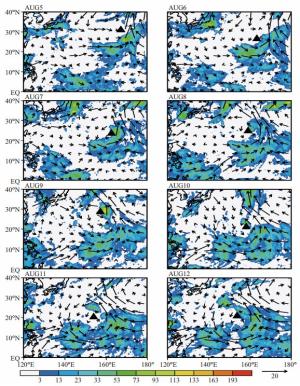
 下载:
下载:
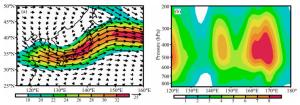

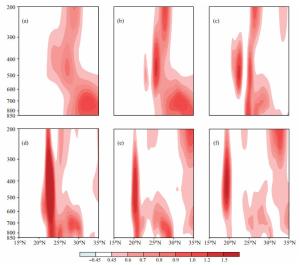
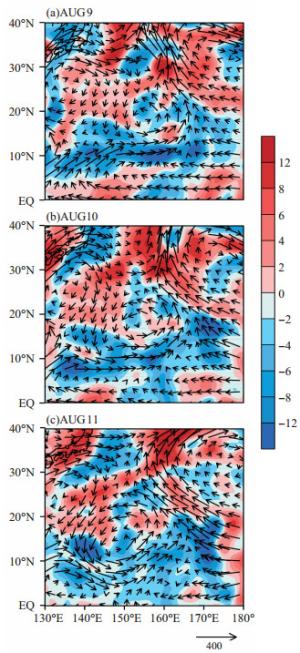
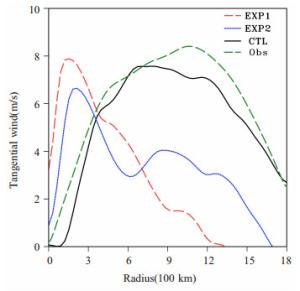
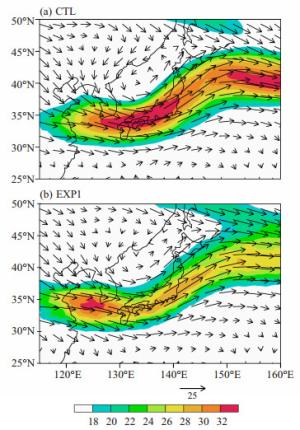
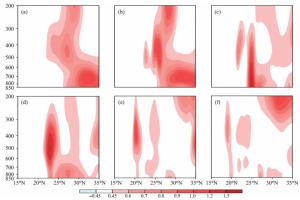

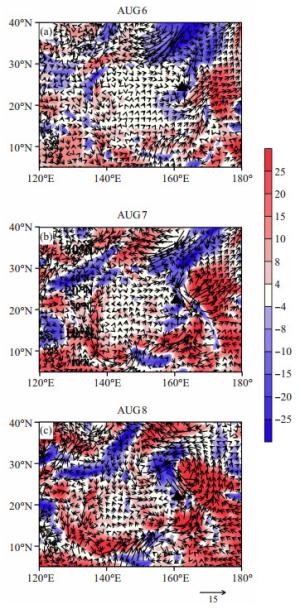
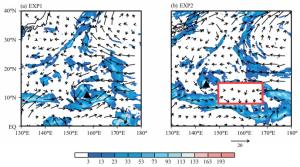


 粤公网安备 4401069904700003号
粤公网安备 4401069904700003号